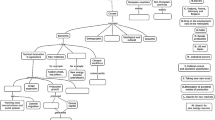Abstract
In this volume, Furberg and Arnseth report on a study of genetics learning from a socio-cultural perspective, focusing on students’ meaning making as they engage in collaborative problem solving. Throughout the paper, they criticize research on student understanding and conceptual change conducted from a cognitive/socio-cognitive perspective on several reasonable grounds. However, their characterization of work undertaken from this perspective sometimes borders on caricature, failing to acknowledge the complexities of the research and the contexts within which it has been carried out. In this commentary, I expand their characterization of the cognitive/socio-cognitive perspective in general and situate my own work on genetics learning so as to provide a richer view of the enterprise. From this richer, more situated view, I conclude that research from both perspectives and collaboration between those looking at learning from different perspectives will ultimately provide a more complete picture of science learning.
Similar content being viewed by others
References
Appiah, K. A. (2006). Cosmopolitanism: Ethics in a world of strangers. New York: W. W. Norton.
diSessa, A. A. (2006). A history of conceptual change research: Threads and fault lines. In R. K. Sawyer (Ed.), The Cambridge handbook of the learning sciences (pp. 265–281). New York: Cambridge University Press.
Kindfield, A. C. H. (1991). Confusing chromosome number and structure: A common student error. Journal of Biological Education, 25, 193–200.
Kindfield, A. C. H. (1993/1994). Biology diagrams: Tools to think with. The Journal of the Learning Sciences, 3, 1–36.
Kindfield, A. C. H. (1994a). Assessing understanding of biological processes: Elucidating students’ models of meiosis. The American Biology Teacher, 56, 367–371.
Kindfield, A. C. H. (1994b). Understanding a basic biological process: Expert and novice models of meiosis. Science Education, 78, 255–283.
Lewis, J., & Kattmann, U. (2004). Traits, genes, particles and information: Re-visiting students’ understandings of genetics. International Journal of Science Education, 26, 195–206.
Roth, W.-M., Lee, Y. J., & Hwang, S. W. (2008). Culturing conceptions: From first principles. Cultural Studies in Science Education, 3, 231–261.
Tobin, K. (2008). In search of new lights: Getting the most from competing perspectives. Cultural Studies in Science Education, 3, 227–230.
Author information
Authors and Affiliations
Corresponding author
Rights and permissions
About this article
Cite this article
Kindfield, A.C.H. Situating cognitive/socio-cognitive approaches to student learning in genetics. Cult Stud of Sci Educ 4, 193–199 (2009). https://doi.org/10.1007/s11422-008-9157-2
Received:
Accepted:
Published:
Issue Date:
DOI: https://doi.org/10.1007/s11422-008-9157-2



